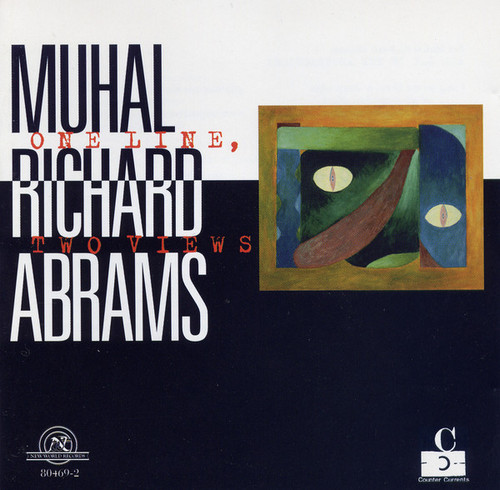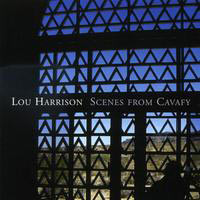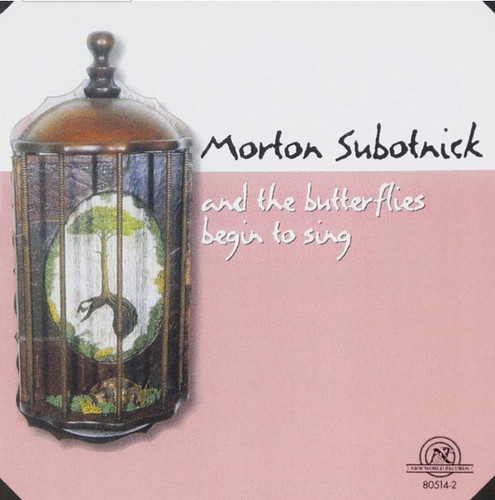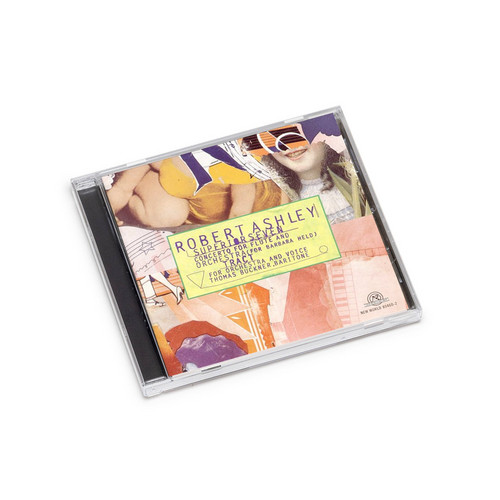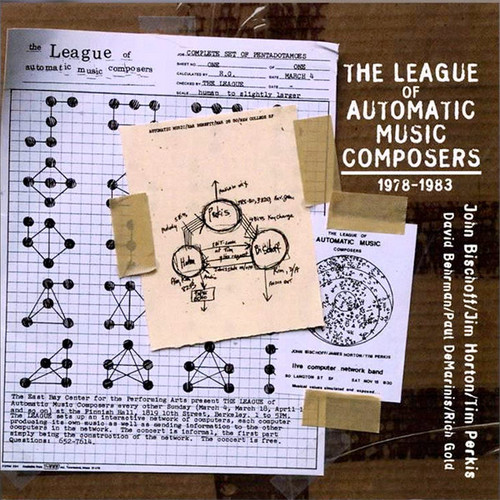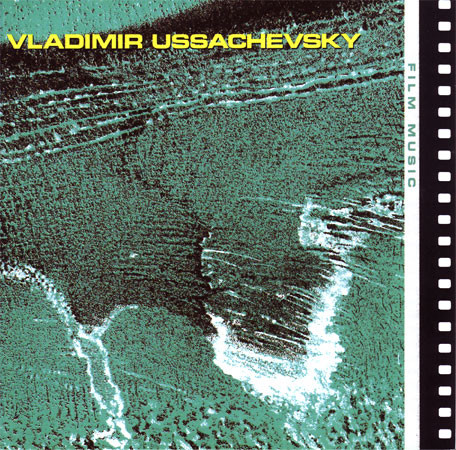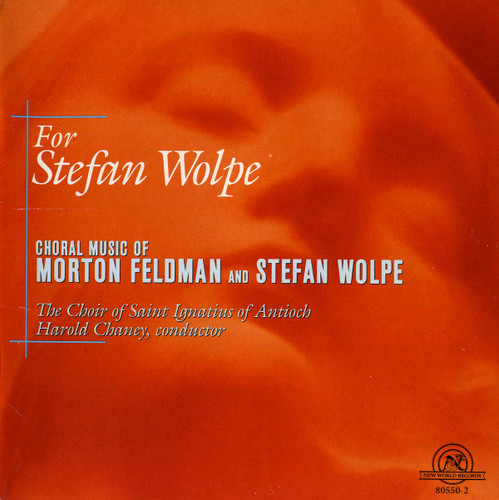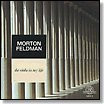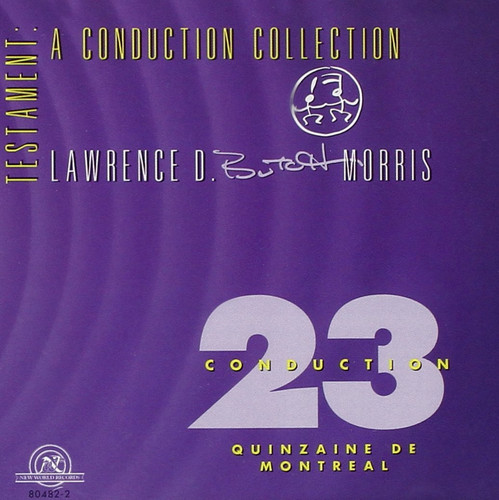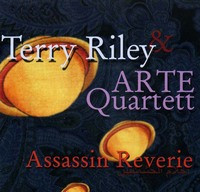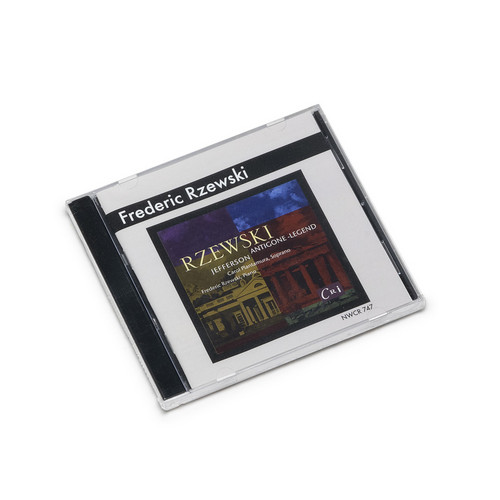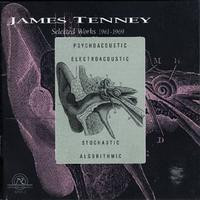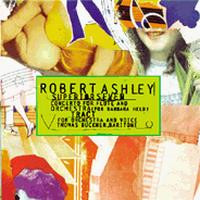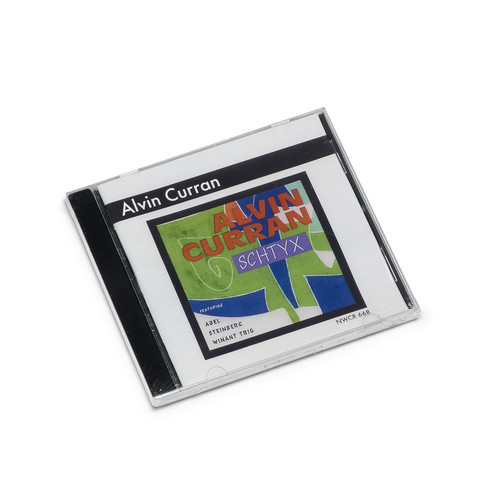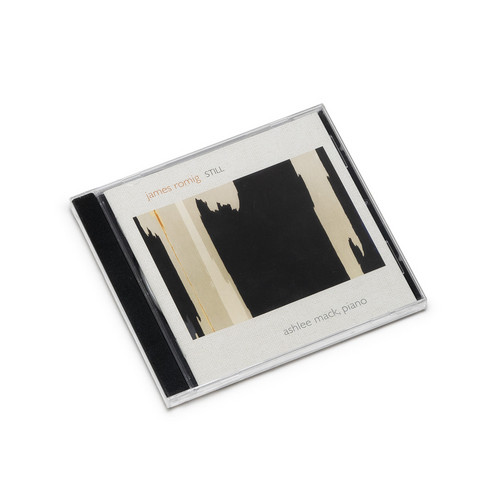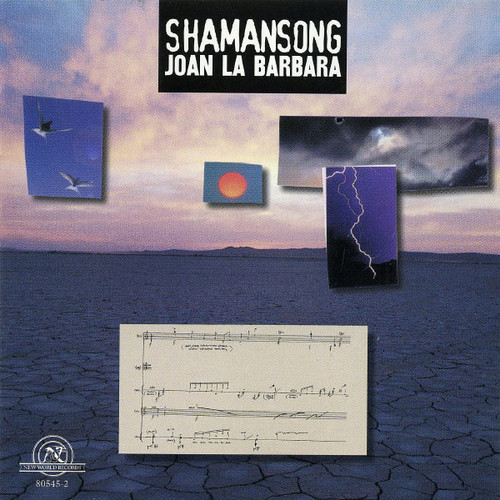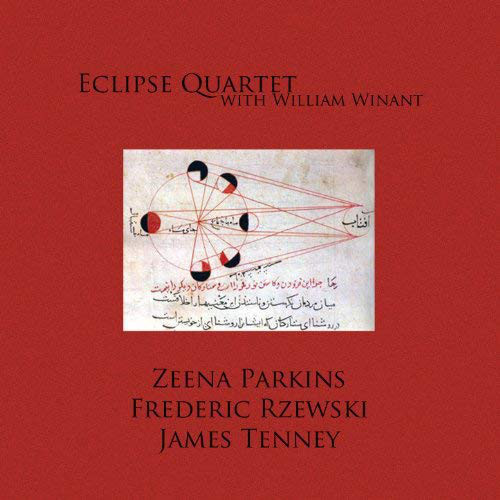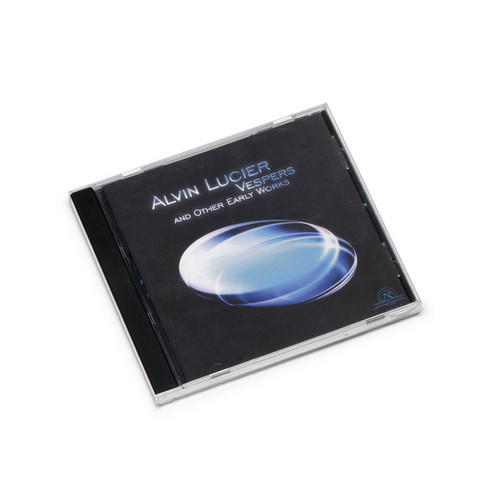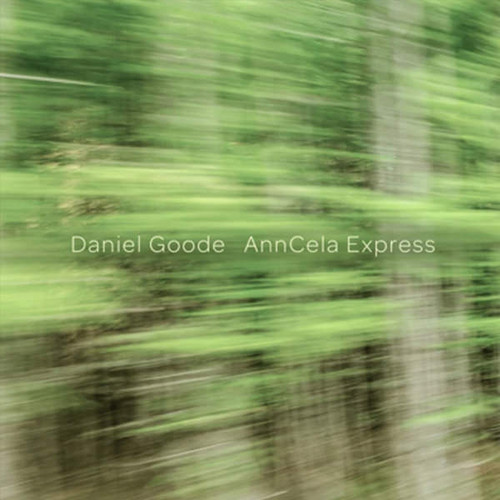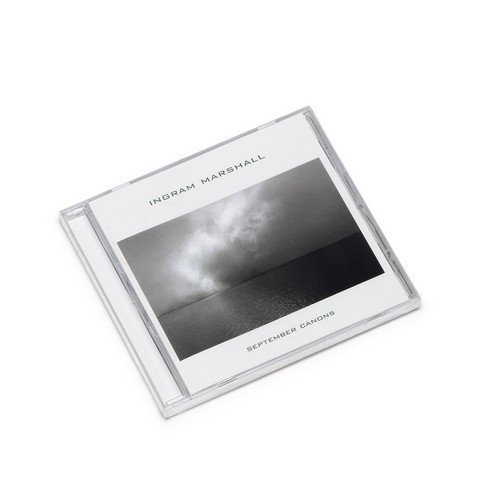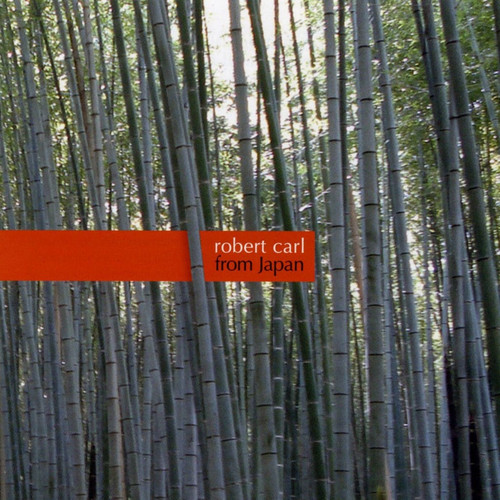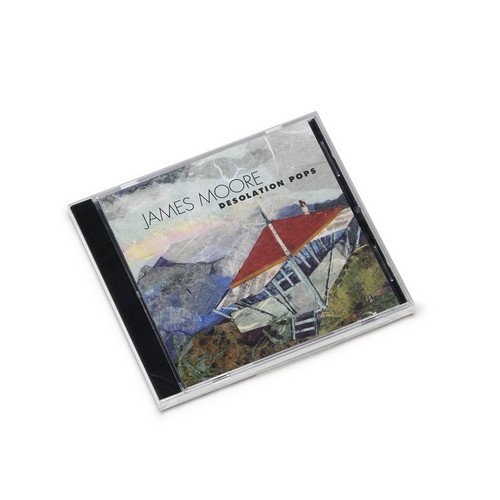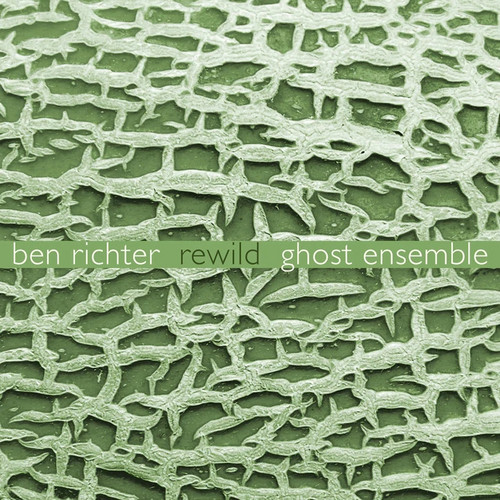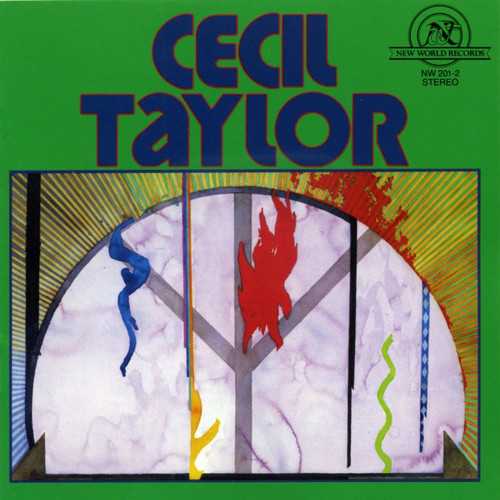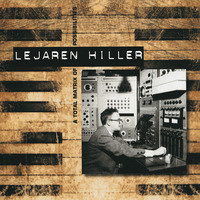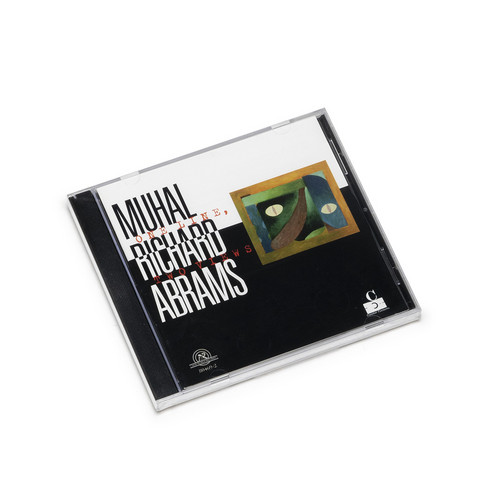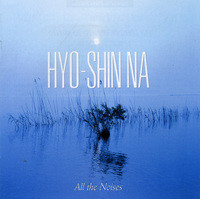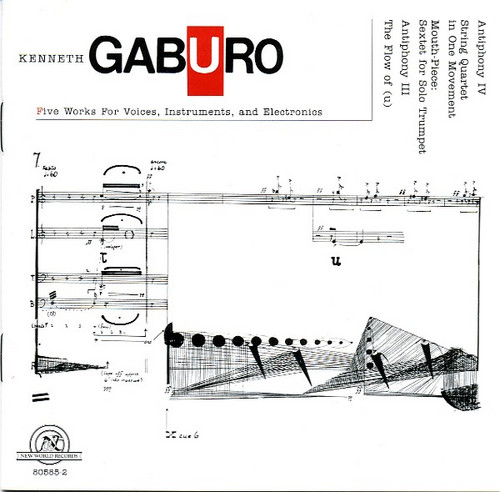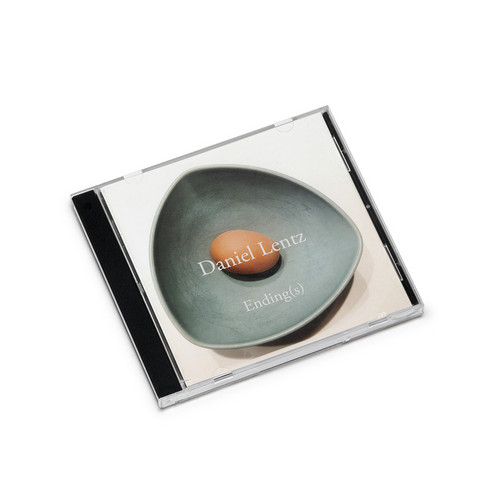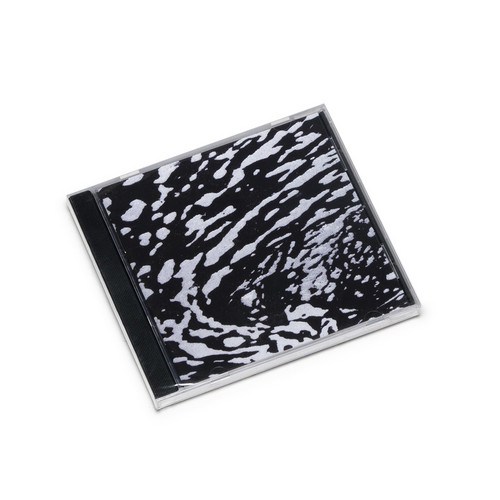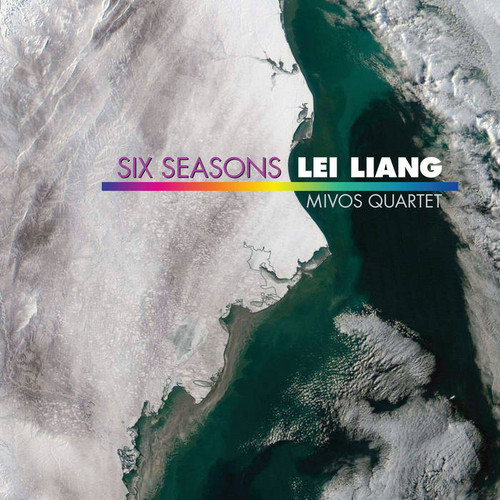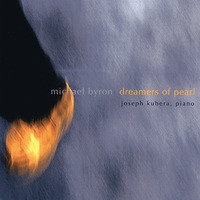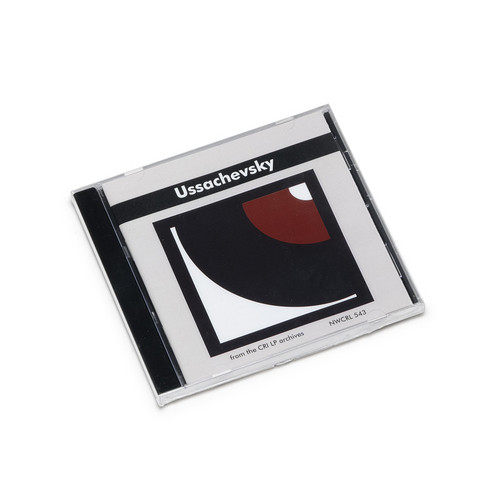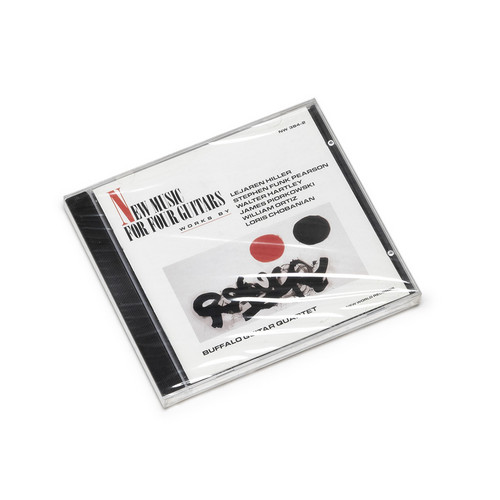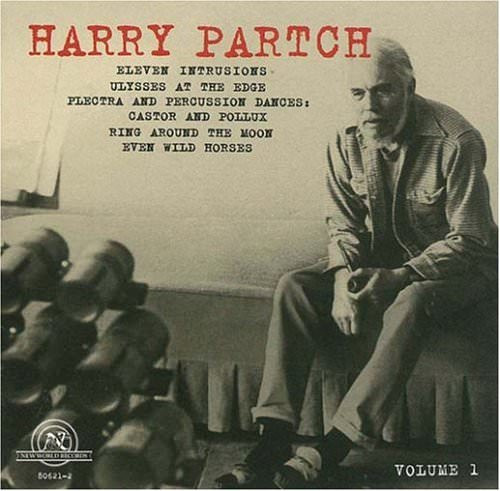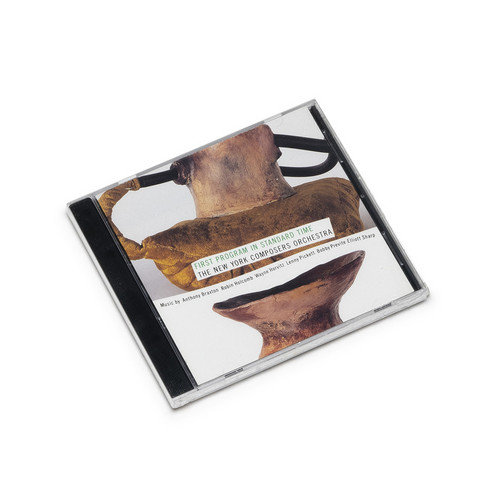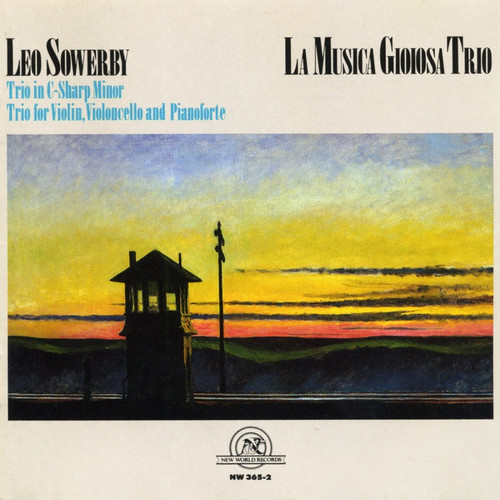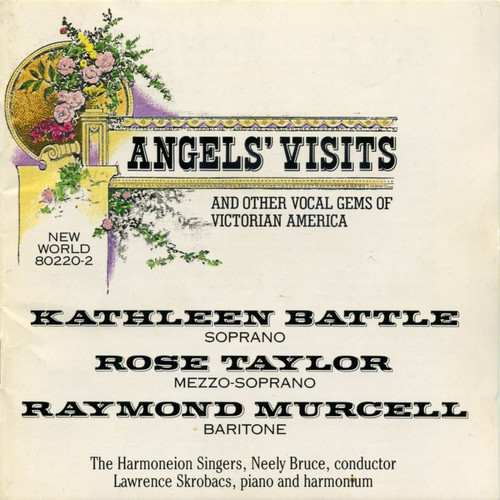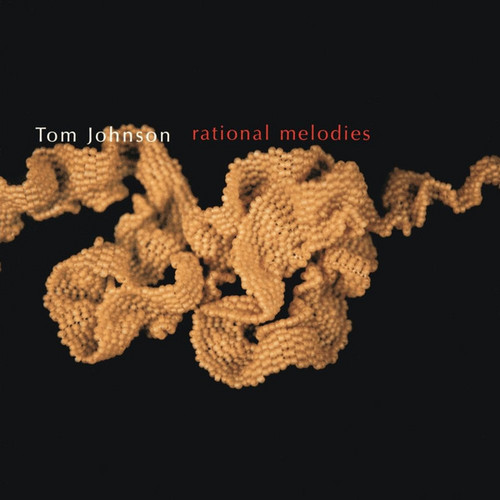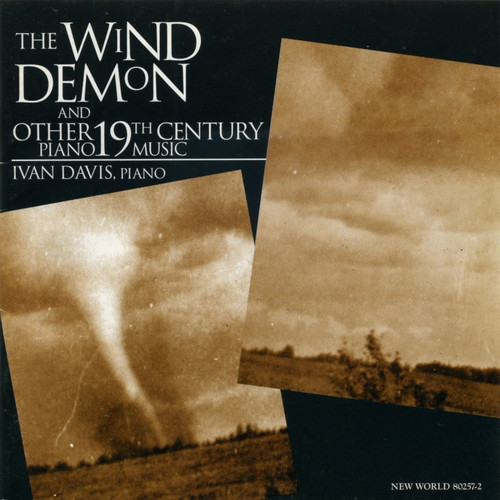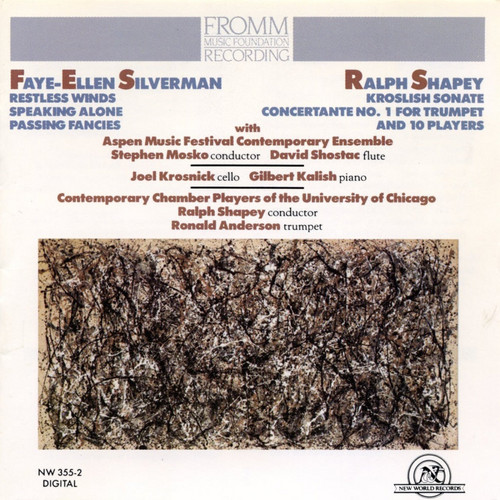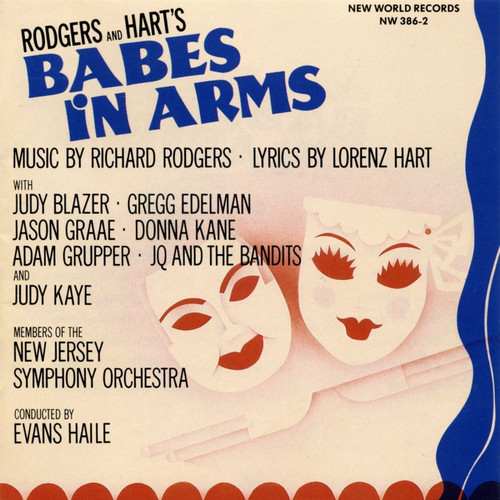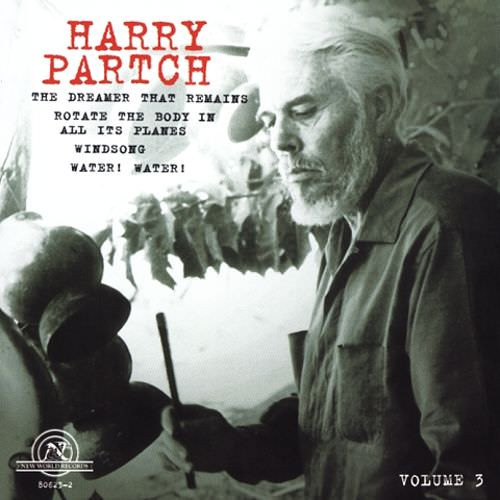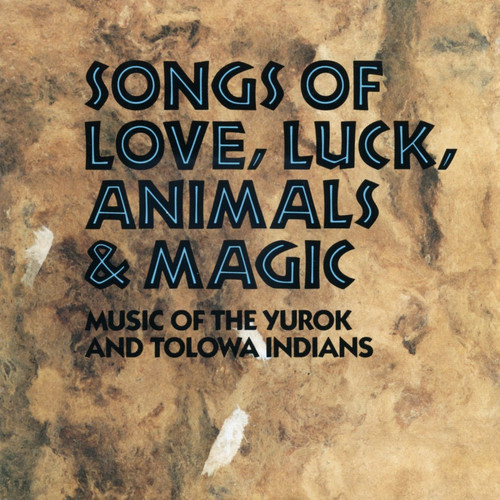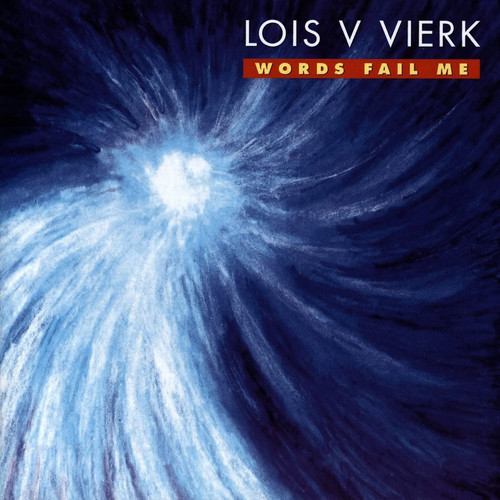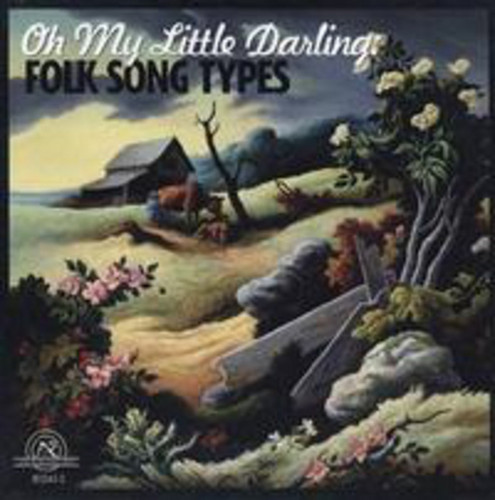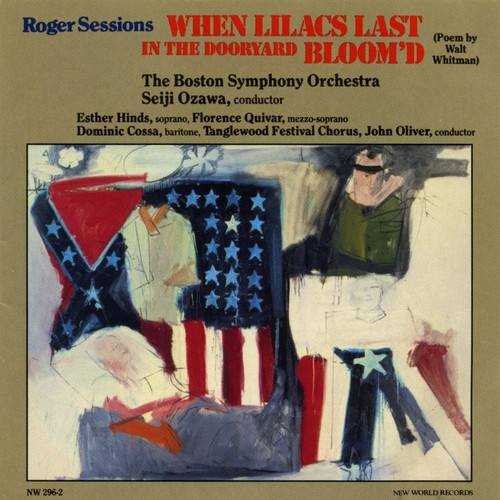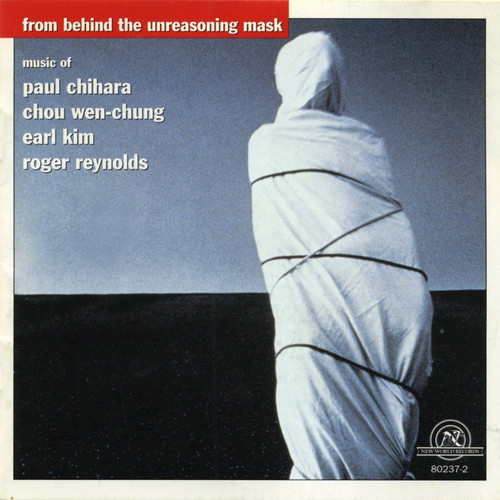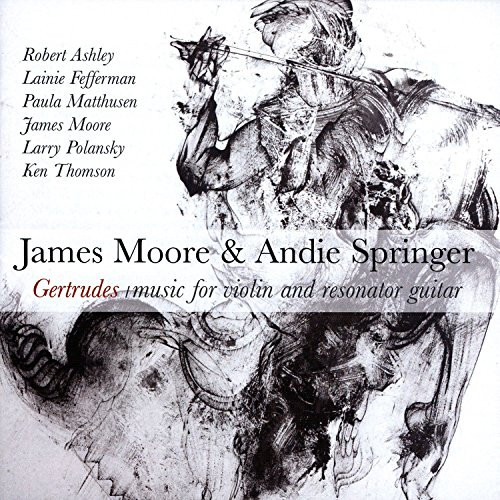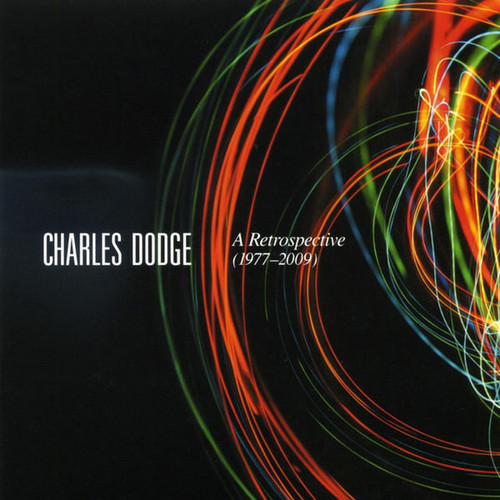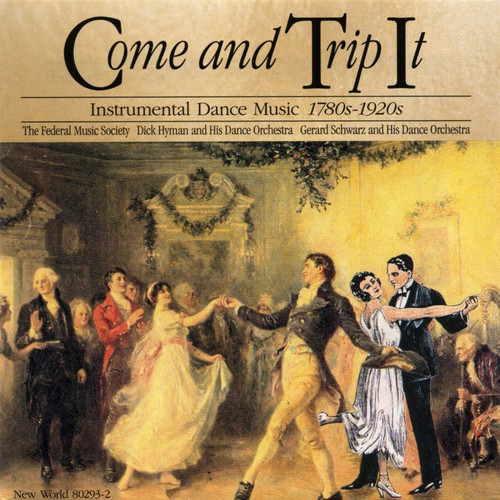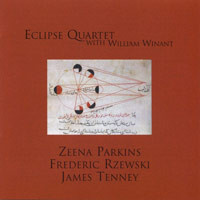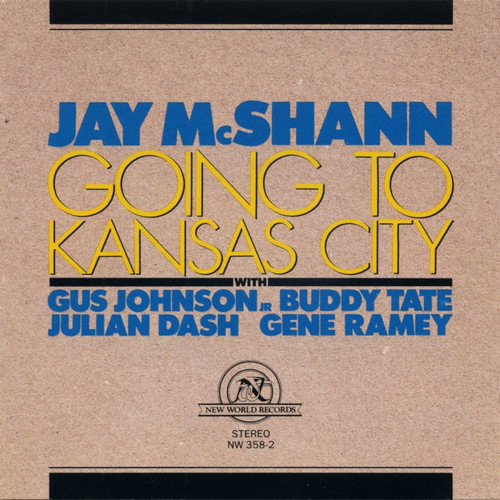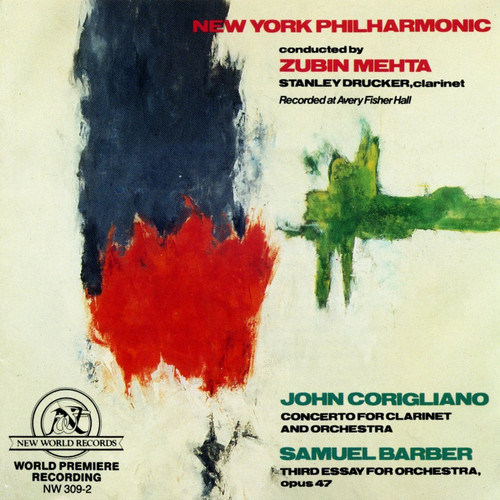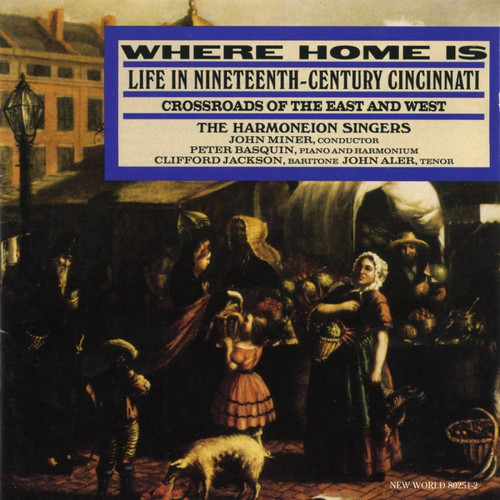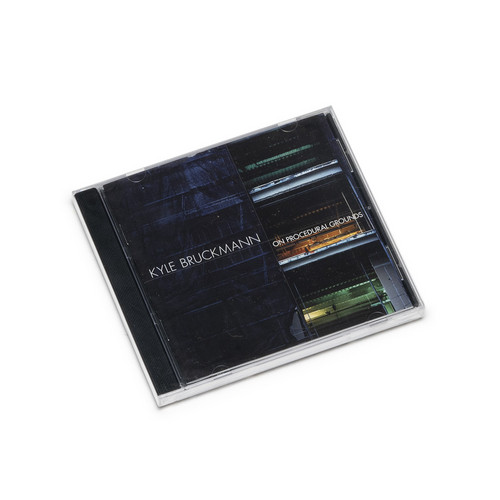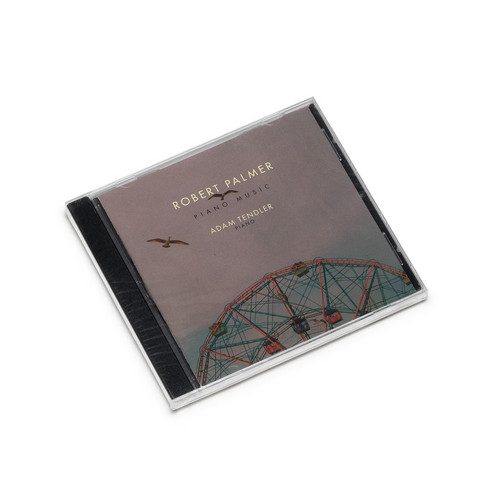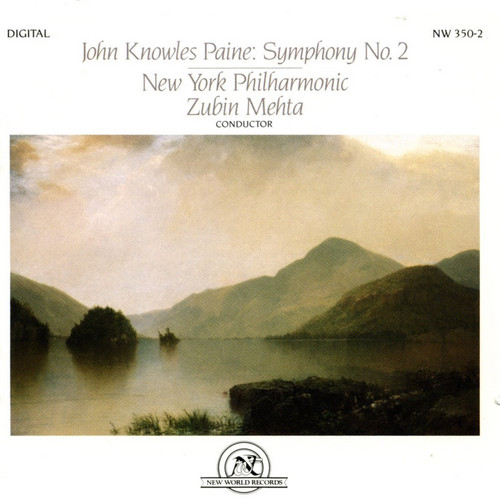Search (1 labels)
One Line Two Views
One Line, Two Views features seven compositions for nine-piece
ensemble by Muhal Richard Abrams. Works range from the subtle textural
and tonal explorations of “Textures,” “Hydepth,” and the title track to
the hard bop revisitations of “11 over 4” and “The Prism 3.” The disc is
rounded out by an ebullient, joyous, and celebratory “Tribute to Julius
Hemphill and Don Pullen” and the blues-tinged “Ensemble Song.” Abrams
opts for unique instrumentation including violin, harp, and accordion.
…
Scenes from Cavafy: Music for Gamelan
Lou Harrison’s (1917–2003) long-term love affair with the Indonesian gamelan had its roots in a course he took from Henry Cowell in the spring of 1935. As Harrison refined his understanding of traditional gamelan procedures during the 1980s, he began to transfer these compositional ideas to works for Western instruments. At the same time, Harrison continued to compose for the Indonesian ensemble itself, indulging a fascination for Asia that had been part of his life since his youth while …
And the Butterflies Begin to Sing
Both works on this disc share the trademarks of his unique style: the relentless, pounding motoric energy that merges, sometimes with startling suddenness, into a dreamlike texture that seems to float, the continual sense of something magical occurring, often produced with no more paraphernalia than a desktop computer. And the Butterflies Begin to Sing [for string quartet, bass, MIDI keyboard, and computer (1988)], conceived as music for an imaginary ballet, is based on The Hundred Headless Wome…
Superior Seven / Tract
“I am finally able to say that I write for orchestra— even if I have to make the orchestra myself.” — Robert Ashley Robert Ashley is known primarily for his theater-based pieces and television operas. This new release presents the world premiere recordings of two of his “orchestral” pieces, Superior Seven (concerto for flute), and Tract (for orchestra and voice), where the orchestra is provided by a MIDI synthesizer. In Superior Seven, the flute floats freely in and out of an atmospheric electro…
1978-1983
John Bischoff, Jim Horton, Tim Perkis, David Behrman, Paul DeMarinis, Rich Gold. 'The League of Automatic Music Composers was a band-collective of electronic music experimentalists active in the San Francisco Bay Area between 1977 and 1983. Widely regarded as the first musicians to incorporate the newly available microcomputers of the day into live musical performance, the League created networks of interacting computers and other electronic circuits with an eye to eliciting surprising and new '…
Film Music
Ussachevsky was one of the most significant pioneers in the compositon of electronic music, and one of its most potent forces. He produced the first works of “tape music,” a uniquely American synthesis of the French musique-concrète and the German pure electronic schools. He co-founded the Columbia-Princeton Electronic Music Center in 1959 and directed its course for the next twenty years as the leading electronic music studio in the United States. This release couples two of his most powerful a…
Choral music of
Choral Music of Morton Feldman and Stefan Wolpe
Stefan Wolpe (1902-1972), one of the great teachers in
twentieth century music, is also now recognized as one of its most
significant composers. His Two Chinese Epitaphs, composed in
Jerusalem in 1937, illustrates the composer's deep allegiance to
socialist issues. He wrote the work swiftly and in anger, just after
learning that the Basque town of Guernica had been bombed by the
Fascists the previous week. He chose to set two poems by Louise …
The viola in my life
"The music on this recording illustrates the essential integrity of the work of Morton Feldman (1926-1987) and one of its fundamental strengths -- its continuously unfolding unanimity of purpose. There are few composers of his generation whose first and last published work (in Feldman's case 'Journey to the End of Night' of 1949 and 'Piano and String Quartet' of 1986) span youth and final years with such a concentrated viewpoint. There are, however, landmarks in the music of Feldman that are lar…
Terry Riley
Uncle Jard (1998) (saxophone quartet, piano, harpsichord, and voice) is a particularly compelling example of this. In this piece, Indian classical music and blues/jazz elements co-exist in a stylistically coherent whole: ragtime and raga have never been so closely intertwined. The piece is divided into three parts. While in the first and second parts the texture of the saxophone ensemble is enriched by the voice and keyboard, in the third part the voice is not featured. Assassin Reverie (2001), …
Antigone-Legend / Jefferson
Carol Plantamura and Frederic Rzewski met in 1965 when they were both at the Center for the Creative and Performing Arts at the State University of New York (SUNY), Buffalo. After beginning to work together in 1966, they collaborated in Rome as members of the improvising collective Musica Elettronica Viva, and from 1966 to 1970 they performed together throughout Italy, Belgium, the Netherlands, and Germany as a piano-vocal duo. Jefferson was written for Carol Plantamura in 1970 as part of a seri…
James Tenney: Selected Works 1961- 1969
This recording is a reissue of the 1992 Frog Peak/Artifact CD, the first recorded collection of James Tenney’s music of the 1960s. Many of the pieces on this CD were realized at Bell Telephone Laboratories from 1961 to 1969, where Tenney used Max Mathews’s digital synthesis program that eventually became Music IV. This software became the model for many of the common computer music environments of the last forty years, and was the first system of its kind available to composers. Tenney’s pieces …
Robert Ashley
Compositions performed by Barbara Held (flute), Thomas Buckner (voice), MIDI Orchestra. Robert Ashley is known primarily for his theater-based pieces and television operas. This new release presents the world premiere recordings of two of his “orchestral” pieces, Superior Seven (concerto for flute), and Tract (for orchestra and voice), where the orchestra is provided by a MIDI synthesizer. In Superior Seven, the flute floats freely in and out of an atmospheric electronic sound tapestry. It is a …
Schtyx
"All his life, my father played the trombone and sang; just before he died, he became a music critic. He said "Chords, yes Alvin, but it needs more melody." SCHTYX was the answer. It opens with a dotted quarter at 50. From the start, implications appear and never cease. They remain open for business like a river. The melody, first thought terminal, is recycled on a child's buzz saw, but then reappears as a mensch. Ten minutes later, it turns up a 5/4 Waltz scrutinized by a group of unemployed ha…
Still
James Romig (b 1971) endeavors to create music that reflects the intricate complexity of the natural world, where fundamental structures exert influence on both small-scale iteration and large-scale design, obscuring boundaries between form and content. Still, for solo piano (2016), inspired by the paintings of Clyfford Still, comprises 43 individual "Iterations" that may be performed in a continuous unbroken strand of music that lasts approximately 55 minutes, or it may be divided into smaller …
ShamanSong
Composer/performer Joan La Barbara (b 1947) has been an influential figure in experimental music since the early 1970s. She has devoted her career to the exploration of the human voice as a multi-faceted instrument. Going far beyond traditional boundaries, she has created works for multiple voices, chamber ensembles, music theater, orchestra and interactive technology. ShamanSong features three premieres of vintage La Barbara "sound paintings" of pensive beauty and spiritual resonance.
ShamanSo…
Spectral Malsconcities
The evolution of the string quartet repertory has accelerated during the last half of the twentieth-century and beyond as composers from both the mainstream and the avant-garde have mined its seemingly inexhaustible creative resources. This CD features the virtually unprecedented combination of string quartet and percussion. It contains three works by prominent American experimentalist composers from several generations exploring the ensemble’s unique sonic resources in diverse stylistic setting…
Vespers and Other Early Works
Alvin Lucier is best known for his pioneering work in the mid-sixties in the exploration of sonic environments, particularly sounds that we would never perceive under ordinary circumstances. Vespers and Other Early Works restores to the catalog several of his key works from that time. In Vespers (1969) performers with Sondols (sonar-dolphin), hand-held pulse wave oscillators, explore the acoustic characteristics of given indoor or outdoor spaces by monitoring the echoes of the pulse waves off th…
AnnCela Express
If you ask a random group of people familiar with contemporary classical music to categorize the style or type of music that Daniel Goode (b. 1936) creates, you would probably receive as many answers as the number of people in that grouping: minimalist, gamelan, process, improvised, folk-based, solo, chamber, orchestral, spoken word, electro-acoustic, intermedia, graphic, and more.
This CD features two types of instrumental music: solo/small ensemble music and orchestral (or, to be more precise…
September Canons
Todd Reynolds, violin, with electronic processing; Members of the Yale Philharmonia, Julian Pellicano, conductor; The Berkeley Gamelan, Daniel Schmidt, director; Ingram Marshall, gambuh (Balinese flute), Serge synthesizer, live electronic processing
The pieces on this recording span almost three decades and represent the principal threads that have run through Ingram Marshall's (b 1942) work: his remarkable skill in using electronics to create expressive and voluptuously beautiful pieces; the in…
From Japan
Robert Carl (b 1954) has long been interested in Japanese music and culture, and in the spring of 2007 he received a grant from the Asian Cultural Council to travel to Japan to interview Japanese composers between the ages of thirty and sixty—his contemporaries, whom he describes as the “post-Takemitsu” generation. The complex interplay of history, culture, and memory has long occupied Carl’s thoughts, and forms the basis of his musical exploration of Japan.
Carl’s perspective of the relationshi…
Desolation Pops
"James Moore (b. 1979) is a composer with an eye toward the world of games and experimental theater. He’s an electric guitarist who’s willing and eager to treat his instrument as a playground, not a reverent, static tradition. He’s a tinkerer, a charmer, and a fella who’s always up for another round at the bar of wacky ideas and intellectual questioning. He’s excited for new and unexpected opportunities for collaboration, but always maintains a voice that seems to stay recognizably his own throu…
Rewild
Inspired by the perspectives and timescales of nonhuman beings and distant orders of magnitude in the universe of life, Rewild seeks new strata in musical parameters, exploring the uncanny zones at which pitch becomes rhythm, harmonic interval becomes beating rate, and timbres morph over time. Like a giant body or ecosystem slowly breathing, Rewild’s constantly transforming sound-world orients temporal perception toward global listening. By offering an aural metaphor for the interacting gradual …
Cecil Taylor Unit
This record presents further evidence of Cecil Taylor’s genius and awesome ability to work within the group context, in which he furthers his exploration of the piano “as catalyst feeding material to soloists in all registers.” This music at times gets very intense. It will take you down forgotten little streams in your mind and swell them with rivers of sound as Taylor pours notes on your ears. Listen.
* * *
"More than free, the music has a beguiling formal structure, and Taylor feeds all the e…
Lejaren Hiller: A Total Matrix of Possibilities
Lejaren Hiller (1924-1994) was a musically eclectic composer, often combining several different types of techniques in the same piece. In the mid-sixties, he asserted that his "objective in composing music by means of computer programming is not the immediate realization of an aesthetic unity, but the providing and evaluating of techniques whereby this goal can eventually be realized." In this sense Hiller was a forward-looking composer, in that each piece was an experiment that lead towa…
One Line, Two Views
One Line, Two Views features seven compositions for nine-piece ensemble by Muhal Richard Abrams. Works range from the subtle textural and tonal explorations of "Textures," "Hydepth," and the title track to the hard bop revisitations of "11 over 4" and "The Prism 3." The disc is rounded out by an ebullient, joyous, and celebratory "Tribute to Julius Hemphill and Don Pullen" and the blues-tinged "Ensemble Song." Abrams opts for unique instrumentation including violin, harp, and accordio…
Hyo- shin Na: All the Noises
Ocean/Shore 2 (2003) is one of a series that are studies on the use of diverse materials and on the coexistence, within a piece of music, of various instruments. As in the meeting and interaction of water and land, these instruments can have fundamentally very different characters (piri and violin, or clarinet and cello), yet shouldn’t lose their basic nature in the interests of harmony, or even beauty. On first hearing, one might consider All the Noises in the World (2006) to be a piece of trad…
Five Works For Voices, Instruments, And Electronics
Kenneth Gaburo (1926–1993) composed works for instruments, voices, electronics, multi-media, theater, and a variety of other resources. Foremost among his many interests was a concern with the voice and with language—how we shape language and how we are shaped by it—and with making works that existed somewhere between the boundaries of music and language. Of the works on this CD, three are intensely concerned with what Gaburo termed “Compositional Linguistics” (Antiphony III, Antiphony IV, and M…
Ending(s)
While certain recognizable fingerprints are found throughout the body of Daniel Lentz's (b. 1942) work, he has never been content to settle within one particular style or mode of music for long, moving ever forward in an evolutional continuum, an overriding arc that defines his growth as a composer -- beginning with traditional music, diverting into electronic music, moving into performance art pieces for his various touring groups, then sallying into minimalism, followed by work distinguished f…
'Waves breaking on rocks
Peter Garland (b. 1952) studied with Harold Budd and James Tenney at Cal Arts and had long student-mentor friendships with Lou Harrison, Conlon Nancarrow, Paul Bowles and Dane Rudhyar. Like Harrison, Garland has forged his own musical vocabulary as a kind of new indigenous music, celebrating pan-cultural experience and vision, and unafraid to suggest that music can still give us a glimpse of that which is sacred. Waves Breaking on Rocks (Elegy for All of Us) (2003) is a suite of elegies that was…
Six Seasons
Tip! "A cycle of six movements and a coda, Six Seasons is as protean as the ocean waters that serve as its substance and underlying metaphor. In creating a space of many spaces and multiple temporalities, Lei Liang (b. 1972) resides in select company, artists who have fashioned a syntax of exploration both attendant to and divergent from music history’s established grooves and curves of innovation and tradition. Of the composers now lionized through the ever-expanding and often-arbitrary canon, …
Dreamers of Pearl
Joseph Kubera, piano. Michael Byron (b. 1953) was a pupil of James Tenney, and later, of Richard Teitelbaum. The body of music he has composed over the past thirty years has been harmonically rich, rhythmically detailed, and increasingly virtuosic. Dreamers of Pearl (2004-05) evinces a sensitivity for the sound of the piano, a sensibility of extended playing-listening, and an interest in repetition and change through gradual and seemingly clandestine processes that transform and extend what we h…
Dialogues and Contrasts / Colloquy
The title Dialogues and Contrasts describes the nature of the exchange which takes place between the performer and the materials committed to tape. In the first movement the exchange is more in the nature of an argument. Though initially each side appears to favor an independent thematic course, as the movement progresses the performers engage in direct response to the statements on tape. The second movement is more subdued and reflective, with many solo passages, particularly from the French ho…
New Music for Four Guitars
The guitar is the popular instrument par excellence. As apt for Brazilian sambas for Irish ballads or American blues, the guitar has also recently been adapted as a surrogate for plucked instruments from non-Western musical traditions; no idiom seems beyond its reach. When social history of the second half of the twentieth century is written, it may be seen that the guitar is as central to this era as the piano was to the nineteenth century. But while the piano was an emblem of upward social asp…
The Harry Partch Collection, Volume 1
This newly remastered reissue marks a welcome return to the catalog of the first volume of the classic 4-CD collection that was formerly available on the CRI label. The works recorded on this disc span the first six years of what Harry Partch (1901–1974), slightly tongue-in-cheek, called the “third period” of his creative life. They show him moving away from the obsession with “the intrinsic music of spoken words” that had characterized his earlier output (the vocal works of 1930–33 and 1941–45)…
The New York Composers Orchestra: First Program in Standard Time
Acoustic jazz recording featuring Holcomb's eleven-minute title-track, Lenny Pickett's ten-minute Dance Music for Composer Orchestra, Elliott Sharp's eight-minute Skew and Horvitz's nine-minute Paper Money and an eleven-minute composition by Anthony Braxton.
Form
Comet-like radiance, conviction, fervent intensity, penetrating thought on many levels of seriousness and humor, combined with breathtaking adventurousness and originality, marked the inner and outer life of Stefan Wolpe, as they do his compositions. -- Elliott Carter
Stefan Wolpe (1902-1972) is an acknowledged master of modern music whose oeuvre has had a lasting influence on both classical and jazz musicians. Though receptive to prevailing musical trends, Wolpe was an individualist who forg…
Trio In C-Sharp Minor / Trio For Violin, Violoncello And Pianoforte
Leo Sowerby (1895-1968) lived for most of his career in Chicago where he spent more than 40 years on the faculty of the American Conservatory and nearly as long as organist-choirmaster of St. James Cathedral. His music can be described as "eclectic" in the best sense of the word.
German theory, French composition, English and American folk music, liturgical music and jazz (he toured with the Paul Whiteman Orchestra) all figure among the influences on his vast body of work. He produced more than…
Kathleen Battle, Raymond Murcell, Rose Taylor, The Harmoneion Singers, Neely Bruce, Lawrence Skrobacs
Angels' Visits (And Other Vocal Gems Of Victorian America)This recording is a collection of American songs and hymns published mostly during the 1860s and 1870s that deal generally with angels, heaven, and death. Considering the rather morbid subject matter of these songs, they are surprisingly pleasant and refreshing. Death and its associated aspects were a major topic in fiction, poetry, art, and music during much of the nineteenth century in Victorian America. Consequently, the songwriters aimed at a broad popular audience because the subjects were …
Rational Melodies
I am particularly pleased, because the result is so different from the solo flute recording of Eberhard Blum and the solo clarinet recording of Roger Heaton. It is not just another interpretation, but a case where interpreters have added so much insight to the music that the music itself has grown. When I was composing this music around 1982, I really thought I was simply writing melodies, but now these little pieces, though remaining melodies, have become something much more, something I…
The Wind Demon And Other 19th Century Piano Music
This compendium of American piano music of the last half of the nineteenth-century is a potpourri of popular salon pieces and works of more serious aspirations. Together they conjure a characteristic portrait of the society for which they were composed, evoking images of frontier primitivism, brownstone-ballroom elegance, urban sophistication, as well as a more academically inclined formalism looking back to European models. Scintillating pianism by Ivan Davis and absolutely fascinating notes on…
Works By Faye-Ellen Silverman And Ralph Shapey
Faye-Ellen Silverman has been prolific throughout her career. She has written a wide variety of orchestral and chamber-music works, which have been performed by major ensembles throughout America and in Europe and Asia. A graduate of Barnard College, Harvard University, and Columbia University, she studied composition with, among others, Otto Luening, Vladimir Ussachevsky, Leon Kirchner, and Jack Beeson. Silverman's Passing Fancies (1985), whose patron, Paul Fromm, is remembered in the initials …
Babes in Arms
This is the first recording of the original score from one of Broadway's gems. “My Funny Valentine”, “The Lady Is A Tramp”, “Johnny One Note”, and “I Wish I Were In Love Again” all came from this show (when was the last time you saw a Broadway show with four hit tunes!), an affectionate and mildly satiric look at a fictional town's adolescent population, abandoned by their parents, who are forced to fend for themselves. More than financial and amorous matters concerned them: These kids wrestled…
The Harry Partch Collection, Volume 3
The four works on this newly remastered CD are eloquent testimony to Harry Partch’s aesthetic of corporeality. The music he composed for The Dreamer That Remains, for Rotate the Body in All Its Planes, for Windsong, and for Water! Water!, was intended as only one component in the total artistic experience. In these works music joins with drama, with film, with dance, even with gymnastics, as integral parts of the composer’s vision..New World's The Harry Partch Collection, Vol. 3, as was the CRI …
Songs of Love, Luck, Animals, & Magic
In aboriginal times the coastal Indians of Northern California shared a tremendous wealth of food, clothing, and material goods. From Trinidad, California, to the Oregon border, the forests almost touch the Pacific Ocean, which gave the people the bounty of both the woodlands and the sea. The Tolowa and the Yurok, along with their neighbors the Hupa and the Karok, are the southernmost representatives of the elaborate Northwest Coast Indian culture area. This disc contains a variety of love songs…
Words Fail Me
The majestic beauty and savage turbulence that one often beholds while witnessing an awesome act of nature is also evident in Lois V Vierk's vigorous and delicate music. In her meticulously wrought works, she enfolds the rapture of opulent expression in the elegance of formal rigor, a combination that derives much of its power and grace from a sensitive integration of Western experimental practices with the traditional classical music of Japan. "I've always felt equally drawn to the West and to…
Oh My Little Darling: Folk Song Types
This superb anthology of old ballads and other folk-song types comprises pre-war commercial and field recordings made in the rural Southeast, the part of the United States that most closely met the textbook definition of a "folk culture," in which culture was relatively homogeneous and customs were shared across class and ethnic lines. For this reason, this album focuses on the rural Southeast as a rich source of American folk life, ranging roughly from Virginia and Kentucky south to Alabama and…
When Lilacs Last In The Dooryard Bloom'd
Of the numerous settings of Walt Whitmans poetry, and this poem in particular, Sessions's is generally agreed to be one of the very finest and most sensitive. His mature style - a highly personal, instantly recognizable mix of severity and control with passion and serenity - projects the poetry now in simple chordal declamation, now in the long, high-arched melodies of which he is the master, conveying wonderfully the feel and variety of Whitman's lines. Over the years, Sessions's elegy has ta…
From Behind The Unreasoning Mask
Clearly influenced by Varese's concept of "pure sound," the four works on From Behind the Unreasoning Mask privilege the exploration of sound as a means of musical expression. In the 1970s, the integration of new vocal and instrumental techniques and, sometimes, electronic sound sources into the composer's vocabulary broadened the tonal, textural--and, consequently--expressive palette immeasurably. Roger Reynolds's (b. 1934) From Behind the Unreasoning Mask (1975) presents an interplay between a…
Gertrudes
Music for violin and resonator guitar by Robert Ashley, Lainie Fefferman, Paula Matthusen, James Moore, Larry Polansky and Ken Thomson. Longtime friends and collaborators James Moore and Andie Springer began performing as a duo in 2011 while on tour with playwright Richard Maxwell's Neutral Hero. This anthology comprises compositions by their friends and colleagues, all written or adapted for the duo and their unconventional instrumentation of violin and steel-string resonator guitar. Lar…
A Retrospective (1977-2009)
The music on this disc was written over a period of more than thirty years. Over the course of those years, so much has changed in technology, in music, in life in general. But throughout the work represented here one can recognize the remarkable, entirely original voice of Charles Dodge (b. 1942). He is truly a composer who writes music that does not sound like anybody else's. He has never been part of any “ism” or movement; he is his own category. And although his stylistic approach and his…
Come and Trip It-Instrumental Dance Music: 1780s to 1920s
This recording demonstrates some of the major developments in American social dancing and its music from after the Revolution up to the beginning of electrical recording in the mid-1920s. Dances such as the waltz, polka, tango, quadrille, charleston, cakewalk and turkey-trot are still familiar today, their names holding a permanent place in popular culture. The music they were danced to, however, is often forgotten.
This collection of hits, fads and phenomenons from the history of social dancin…
Works for String Quartet and Percussion
"The evolution of the string quartet repertory has accelerated during the last half of the twentieth-century and beyond as composers from both the mainstream and the avant-garde have mined its seemingly inexhaustible creative resources. This CD features the virtually unprecedented combination of string quartet and percussion. It contains three works by prominent American experimentalist composers from several generations exploring the ensemble's unique sonic resources in diverse stylistic settin…
Going To Kansas City
Jay McShann secured a lasting place in jazz history on April 30, 1941, when he became the first bandleader to usher Charlie Parker into a studio for a commercial recording session. For years, that was how McShann was remembered, if at all—as an early benefactor of the most influential figure in modern jazz. Shamefully, it took the jazz literati three decades to recognize Bird's old boss as a dynamic force himself.
McShann's advocacy of Parker was hardly his only distinction as a bandleader. A ri…
Concerto For Clarinet And Orchestra / Third Essay For Orchestra, Opus 47
The Third Essay was Samuel Barber's last completed work and its drama and lyricism are entirely characteristic of the neo-Romantic style he composed in for his entire life, a style which won him a large and faithful audience. In his avowed concern for writing music that communicates with the listening public, John Corigliano could be seen as an inheritor of Barber's mantle. The Concerto for Clarinet and Orchestra is a large-scale work that demonstrates his eclectic style at its finest. Corigli…
Where Home Is: Life In Nineteenth-Century Cincinnati/Crossroads Of The East And West
Life in 19th-Century Cincinnati
The Harmoneion Singers; John Miner, conductor; Peter Basquin, piano and harmonium; Clifford Jackson, baritone; John Aler, tenor
Where Home Is is an anthology of traditional songs of family and religious life coupled with contrasting songs by abolitionists, frontiersmen, and blackfaced minstrels. The explosive mixture of peoples and cultures found in nineteenth-century Cincinnati resulted in the widely disparate musical views represented here by wholesome choral …
Earle Brown: Selected Works 1952- 1965
This long-awaited reissue of the CRI recording of Earle Brown’s (1926–2002) music is the best overview of his seminal early works. “It is obviously a great pleasure for me that Cri is re-releasing its 1974 recording of my work, and an even greater pleasure that I am able to add to the repertoire. The performance of Times Five and Novara still seem very fine representations of the works and are performed brilliantly by the Dutch musicians. December 1952 as realized by the late, brilliant pianist …
On Procedural Grounds
n his compositions, composer/performer Kyle Bruckmann seeks to integrate rigor and internal logic with raw immediacy while fully engaging his fellow performers as not simply dutiful interpreters, but creatively invested collaborators. Aesthetically, the results evoke much from European modernism, but realized via idiosyncratic modular forms and process-oriented strategies equally indebted to the New York School and the jazz avant-garde. On Procedural Grounds (2010) is a half-hour work conc…
Piano Music
Robert Palmer (1915-2010) produced more than ninety symphonic, choral, chamber, and solo works throughout his career, earning a reputation in the mid-twentieth century as one of the country's leading, most daring, and -- at the same time -- appealing modernists. Palmer's unique musical language combined a deeply emotional impulse with complex counterpoint and rhythmic structures, drawing comparisons to Hindemith, Bartók, Lou Harrison, even Brahms. Aaron Copland famously included Palmer on his 19…
Symphony No. 2
The premieres of John Knowles Paine's two symphonies-the First in 1876, the Second in 1880-may be said to mark the effective beginning of the American symphonic tradition. American composer George W. Chadwick, who had been a young man in Boston in the 1870s, recalled that the Paine symphonies were "a stimulus and an inspiration to more than one ambitious musician of that time." Paine (1839-1906) studied with a German immigrant musician in Portland, Maine, then went to Berlin for several years. U…
